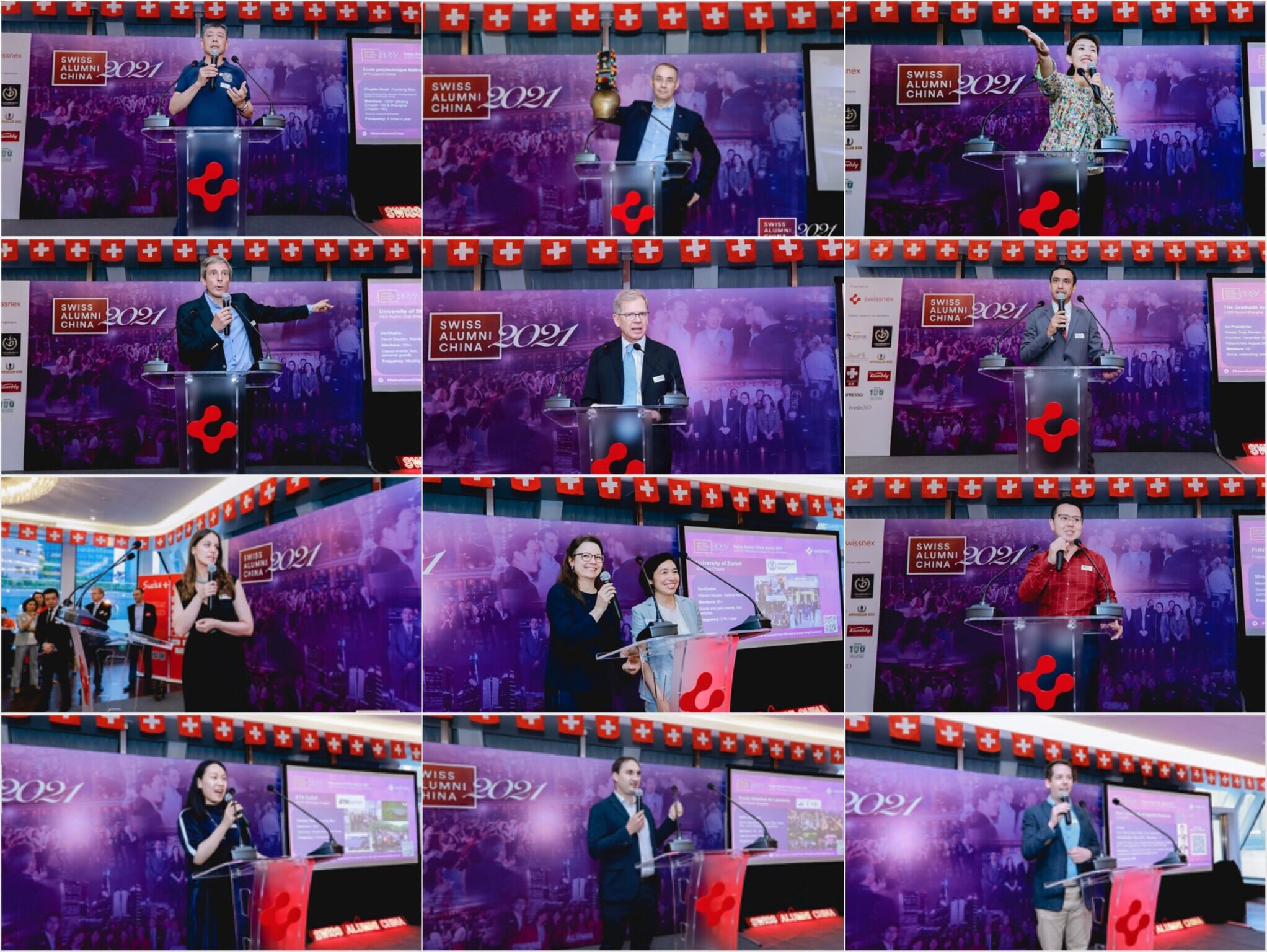By Lefei Chen, Junior Project Manager - Academic Relations
Architecture, as an interdisciplinary field, has always been both challenger and utilizer of cutting-edge technologies of its era. Moving towards the 4th Industrial Revolution, digital fabrication with its new advancements in computational manufacturing opens a new realm for a high-quality, future-oriented, large-scale architecture environment, blurring the lines between digital design and physical construction. In the first edition of our nexFrontier series on April 20th, high-profile speakers from Swiss National Centre of Competence in Research (NCCR) Digital Fabrication, ETH Zurich, Tongji University and Southeast University introduced us to this sci-fi-like world that makes architectural intelligence the reality.
Celebrating the debut of the new nexFrontier series, Dr. Felix Moesner, Science Consul & CEO of Swissnex in China gave a welcome speech introducing nexFrontier as the newly launched webinar series to spotlight cutting-edge research in Switzerland and China, with a particular focus on NCCRs and top-class research labs in China. We hope that this new series could introduce the most pioneering research advancements to an enthusiastic audience while promoting potential exchanges and collaborations.
Firstly, Prof. Dr. Philippe Block from the Institute of Technology in Architecture (ITA) at ETH Zurich, Director of the Swiss National Centre of Competence in Research (NCCR) Digital Fabrication (DFAB), introduced the NCCR DFAB. Its main research focus is to overcome the challenges to be brought by the huge increase of the world population by 2.1 billion by the year of 2050. Translated into the number of new constructions, this means an equivalent of one New York city every month for the next forty years, which will be accompanied by more emissions, construction wastes and energy consumptions. DFAB believes that architects need to change the way of design and building structures. Started in 2014, DFAB has engaged over 140 dedicated researchers from prestigious Swiss universities. Lots of researches have been scaled up into real construction applications. For example, as an experiment house, the roof of the DFAB is robotically assembled relying on a new digital timber construction method developed by researchers from ETH Zurich.
Architect lab, robotically assembled roof
Prof. Dr. Philippe Block stressed that DFAB is committed not only to bringing new technologies and methods but also to offering these methods to the world and engage the manufacturing industry. In the third phase of its development, DFAB is planning to tackle four grand challenges: the first is digital timber, which will bring the digitized timber industry into the next level by augmenting true interaction with robot onsite; the second is digital concrete, which is going to explore how reinforcement and concrete go together; the third challenge is digital construction site, where DFAB will look at the balance between full automation onsite, capitalizing on large-scale robotic, and additive manufacturing to cooperate working robots, etc.; the fourth challenge is digital collaboration, how we can learn from what we do, fully understanding the socio-economical impact of all the technologies that have been introduced.
Prof. Block also introduced one of his projects on rethinking and reducing the most wasteful structure elements - the floor. In medium-high buildings, 75% of its weight is in structure, and more than half of the weight is on the floor. Bringing back historical principles of compression and the advancement of digital fabrication in shaping this non-standard structural geometry, Prof. Block’s team significantly reduced the volume of concrete and steel needed and made the content 100% recyclable and carbon-free.
1.5 tons of ETH researchers sitting on a thin 2cm structure
Then, Prof. Dr. Philip Yuan, Associate Dean of the College of Architecture and Urban Planning (CAUP) at Tongji University, introduced Digital FUTURES, a global platform launched in 2011 by Prof. Dr. Philip Yuan and Prof. Neil Leach, focusing on research and education that addresses digitalization in architecture and design. Every year, DigitalFUTURE organizes conferences, webinars, and workshops according to its annual theme, and invites prominent educators from leading schools of Architecture and architecture associates to create diverse, inter-cultural, and meaningful dialogues. Last year, DigitalFUTURE got the Innovative Academic Program Award of Excellence by ACADIA.
Prominent Educators at Digital FUTURES
Prof. Yuan said that the workshops are mostly cross-disciplinary, covering fashion design material science, computational design, and digital fabrication. Last year, despite the pandemic, digitalFUTURE has received about 12295 applications from all over the world, reaching a new peak since its initiation.
Publications co-authored by Prof. Dr. Philip Yuan
In parallel with DigitalFUTURE events, Prof. Yuan has co-authored and published a series of books where young architects can learn and engage in computational design and robotic fabrication. In the end, Prof. Yuan shared different research projects from his team, progressing from Robotic 3D Printing (2017), Robotic Metal Printing (2018) to Multi-material Robotic Fabrication (2019).
DigitalFUTURES 2019: Multi-Material Robotic Fabricated Bridge
Subsequently, Prof. Dr. Benjamin Dillenburger, Professor at the Institute of Technology in Architecture (ITA) at ETH Zurich, Principal Investigator at NCCR Digital Fabrication, introduced his research on additive construction. He stressed that we need to rethink the use of construction materials, prefabrication, building-elements for future construction. To illustrate this idea, Prof. Dillenburger took the construction of the highly automated elements from the car industry as an example and raised the question of whether we can manufacture buildings like cars. Large-scale additive manufacturing in collaboration with computational design is a promising technology to help achieve that. He showed us his work on both small-scale printers and large-scale (4m-2m-1m) printers that can work constantly for 48 hours and in high resolution that is 100 times more than the print we use currently.
Large-scale (4m-2m-1m) printers
He said that this technology allows architects to make highly bespoke and differentiated elements. Therefore, using manufacturing fabrication in robotic degree means complexity is not a challenge in architecture anymore where fabricating a simple rectangular box is not faster than fabricating a highly complicated and differentiated work as shown below.
Architecture presented in Exhibition in France
He also pointed out the potential of additive manufacturing in dematerialization. Instead of creating 200kg concrete building waste that is carbon-intensive, 3D printing could optimize the process by removing the redundant materials via computer to make the topology. Machine learning in this case was introduced to allow very direct design in the optimization routine.
Last but not least, Prof. Dr. Hao Hua, Associate Professor at Institute of Architectural Algorithms & Applications at Southeast University introduced his research focuses on generative art, which transforms codes into graphics and geometries by using Processing - a programming software nowadays widely used by scientists and artists and believed to have huge potential in generative arts. Processing can simulate dynamical systems which develop abstract line patterns that come from either human imagination or nature, and these beautiful and creative patterns could be applied to the design of clothes, bottles, and fans, etc.
T-shirt using generative art to mimic the image of nature
Prof. Hua underlined that this technology teaches a machine how to recognize a flower, where the designer should fit data with a family of polynomials to make a parametric model and then make the final composition.
Machine learning process to recognize a flower
Besides, he explained that generative arts can also help to collect, analyze and recombine previous cases by recognizing structure information of the architect through programming. After that, the computer could use this structure data to make new designs. Once providing the basic requirements, computers could provide thousands of solutions within a second. However, as Prof. Hua mentioned, in this case, it is interesting to rethink the relationship between designer and machine, because the machine could be very creative.
Multiple design solutions by computer
In the Q&A session, speakers answered questions about the challenges in digital fabrication. Prof. Yuan said we should engage this highly efficient, precise, and sustainable technology into the architecture industry globally as quickly as possible to reduce the heavy carbon emission and waste by the traditional construction method. Prof. Block stressed that in the initial stage of digital fabrication, it is for this newcomer to challenge a traditional construction system that has existed for hundreds of years. People are still doubting many aspects including the cost and safety of the new materials. However, what is more important for us to evaluate is the impact and value-added of this technology on sustainability and our future. Cooperative efforts from the government, builders, and customers are necessary to enable the wide application of this technology. Prof. Dillenburger added that in order to popularize digital fabrication, workers with new design and building knowledge are highly demanded. However, today, there is still a gap of knowledge, education, and labor in this area. This is a challenge, but also a big opportunity for the future of education. Prof. Hua said that students in architecture usually have a stereotype in their designing process where they usually presumed a specific shape in a conventional way instead of a wider range of possibilities and imaginations. Therefore, it is important for students to think about design in a computation way with infinite possibilities.
We would like to thank the 1000+ audience (via Zoom and livestream) who joined our first nexFrontier webinar and participated in the dynamic conversations. We appreciate all the speakers for their insightful and inspiring contributions. Swissnex in China will continue to bring about more exciting events, please stay tuned!


































